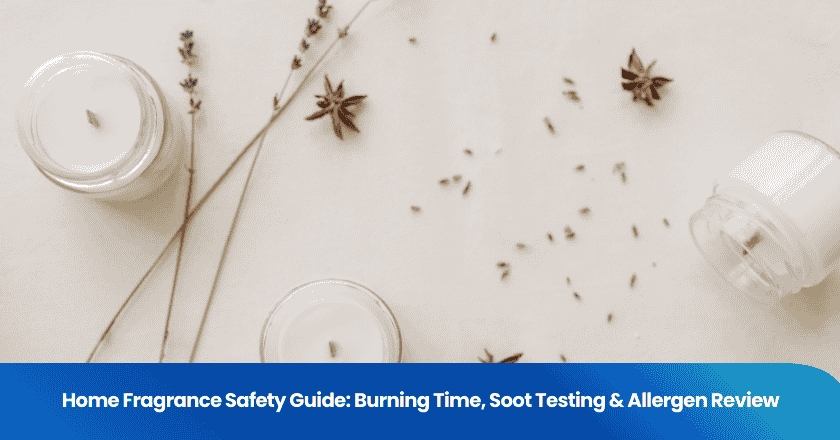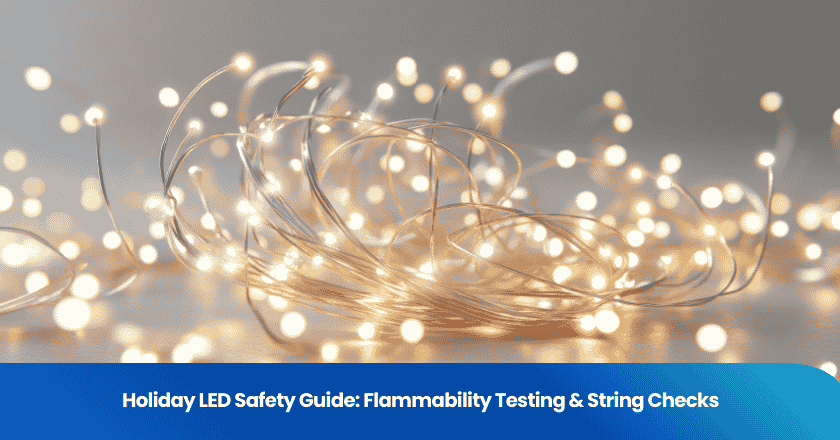
Selecting the right third-party inspection partner is essential for protecting your reputation and ensuring product quality. You need a provider with proven expertise in your field and valid certifications. Reliable third-party inspection services help you meet compliance standards, reduce risks, and strengthen your reputation. By choosing a 3rd party quality inspection company that understands your industry, you gain confidence in every shipment and every audit.
Key Takeaways
- Define your product inspection needs by understanding industry standards and compliance requirements to ensure quality from start to finish.
- Choose a third-party inspection provider with strong industry expertise, valid certifications, and qualified inspectors to guarantee reliable and accurate inspections.
- Look for transparent and detailed inspection reports that help you make informed decisions and improve your product quality.
- Evaluate providers by checking their track record, references, and sample reports to find a trustworthy partner who meets your specific needs.
- Consider pricing models carefully but prioritize value, quality, and support to protect your reputation and avoid costly mistakes.
Identify Inspection Needs
Product and Compliance
You need to start by defining your product inspection requirements. Every industry has unique standards, so you must understand the specific regulations that apply to your products. Quality control begins with knowing what your customers expect and what the law demands. For example, if you manufacture electronics, you must meet both safety and performance standards. If you work in textiles, you need to check for colorfastness, stitching, and labeling accuracy.
Tip: Create a checklist of compliance points for each product line. This helps you ensure quality assurance at every stage and makes it easier to communicate your needs to a third-party inspection company.
You should also consider the importance of pre-shipment inspection. This step verifies that your products meet all requirements before they leave the factory. It reduces the risk of non-compliance and helps you deliver on customer expectations.
Risk and Quality Focus
You must identify the risks that could impact your supply chain. Start by mapping out where defects or non-conformities are most likely to occur. Focus your quality control efforts on these areas. For example, if you source components from multiple suppliers, you need to check each batch for consistency.
Mitigating risks in supply chain operations requires a proactive approach. Use product inspection at critical points to catch issues early. This strategy supports quality control and helps you avoid costly recalls or delays.
A strong focus on quality control ensures that you meet both regulatory and customer expectations. By prioritizing product inspection and quality assurance at every stage, you build trust and protect your brand reputation.
Choosing a 3rd Party Quality Inspection Provider
Industry Expertise
You need a 3rd party quality inspection provider with deep knowledge of your industry. Every sector has unique challenges and quality standards. For example, electronics require strict safety checks, while food products demand hygiene and traceability. You should look for a company that has handled similar products and understands your market’s regulations.
A provider with a global network of experienced inspectors can offer insights into local compliance and international best practices. This network helps you manage quality control across multiple regions. When you choose a third-party inspection company with industry specialization, you reduce the risk of missed defects and ensure high-quality results.
Tip: Ask potential providers for case studies or examples of previous work in your industry. This helps you gauge their experience and ability to handle your specific needs.
Certifications
Certifications show that a 3rd party quality inspection provider meets recognized quality standards. You should verify that the company holds relevant certifications, such as ISO 17020 for inspection bodies and ISO 9001 for quality management systems. These certifications prove that the provider follows strict procedures and delivers consistent results.
A certified provider demonstrates commitment to quality control and impartiality. This is essential for industries that require compliance with international regulations. You should also check if the provider’s inspectors receive regular training and updates on industry standards.
| Certification | Purpose | Why It Matters |
|---|---|---|
| ISO 17020 | Inspection body competence | Ensures reliable inspections |
| ISO 9001 | Quality management systems | Guarantees process control |
Note: Always request copies of certification documents and confirm their validity with the issuing authority.
Inspector Qualifications
Qualified inspectors form the backbone of any third-party inspection service. You should ask about the training, experience, and technical background of the inspectors who will handle your product inspection. Look for a provider that invests in ongoing education and skills development.
A global network of experienced inspectors ensures that you receive consistent service, no matter where your suppliers operate. Qualified inspectors understand the nuances of your products and can spot issues that less experienced personnel might miss. This attention to detail supports your quality control goals and helps you avoid costly mistakes.
Callout: Choose a provider that can supply inspector profiles or resumes. This transparency builds trust and shows that the company values expertise.
Reporting Transparency
Clear and unbiased reporting is critical in third-party inspection. You need an independent report that details every finding, both positive and negative. Transparent reporting allows you to make informed decisions about your shipments and suppliers.
A reputable 3rd party quality inspection provider will deliver reports that are easy to understand and free from conflicts of interest. You should review sample reports to ensure they include photos, measurements, and clear pass/fail criteria. This level of detail supports your vendor quality audit process and strengthens your quality control system.
Tip: Reliable third-party inspection companies provide digital access to reports, making it easier to track trends and share results with your team.
Choosing the right third-party inspection partner means focusing on industry expertise, certifications, inspector qualifications, and reporting transparency. By following these steps, you can ensure that your products meet all requirements and maintain your reputation for quality.
Third-Party Inspection Criteria
Track Record
You should always review the track record of any third-party inspection provider. A strong history of successful projects shows reliability and expertise. Look for companies that have worked with businesses similar to yours. Consistent performance over time means you can trust their inspection process.
Tip: Ask for a summary of completed inspections in your industry. This helps you see if the provider understands your specific needs.
A provider with a proven track record often delivers better results. You gain peace of mind knowing your products will meet quality standards.
References
References give you insight into the provider’s reputation. You should request contact information for current or past clients. Speaking directly with these clients helps you understand the provider’s strengths and weaknesses.
- Ask about communication speed and clarity.
- Find out if the provider offered comprehensive support during the inspection process.
- Check if the provider resolved issues quickly and professionally.
Note: Reliable third-party inspection companies will not hesitate to share references.
Sample Reports
Sample reports show you what to expect from the inspection process. Review these documents to check for clear language, detailed findings, and actionable recommendations. A good report includes photos, measurements, and a summary of results.
| What to Look For | Why It Matters |
|---|---|
| Clear structure | Easy to understand |
| Detailed findings | Supports decision-making |
| Actionable advice | Helps you improve quality |
You should also evaluate how the provider communicates results. Fast, transparent reporting supports your supply chain and helps you make quick decisions.
Callout: Reviewing case studies, references, and sample reports gives you a complete picture of a third-party inspection provider’s capabilities.
Third Party Vendor Inspection Costs
Pricing Models
You face several pricing models when you select a third party vendor inspection provider. Some companies offer pay-per-inspection rates. Others use subscription packages or volume-based discounts. You must compare these options to find the best fit for your business.
| Pricing Model | Description | Best For |
|---|---|---|
| Pay-per-inspection | Fixed fee per inspection | Small or irregular shipments |
| Subscription | Monthly or annual fee | Frequent inspections |
| Volume discount | Lower rates for high quantities | Large-scale operations |
You should ask for a detailed breakdown of costs. This helps you avoid hidden fees and understand what each service includes. Transparent pricing supports your budgeting and planning.
Tip: Request sample invoices from providers. This lets you see how charges apply to different inspection scenarios.
Value Assessment
You must look beyond price when you assess the value of third party vendor inspection services. Quality, reliability, and speed matter as much as cost. A low-cost provider may not deliver the thorough inspections you need for project success.
Consider the provider’s experience, reporting quality, and support. These factors contribute to your investment to boost project success. You should weigh the long-term benefits against the upfront costs. Reliable inspections reduce the risk of defects, delays, and compliance issues. This protection saves you money and strengthens your reputation over time.
- Review the provider’s track record for consistent results.
- Evaluate the clarity and detail in sample reports.
- Check for responsive customer support.
Callout: Balancing cost with service quality leads to greater success in your supply chain. You gain peace of mind and protect your business from costly mistakes.
You make a smart decision when you treat third party vendor inspection as a strategic investment. The right provider helps you achieve success and maintain high standards.
Starting the Partnership
Key Questions
You should begin your partnership with a third-party inspection provider by asking direct questions. These questions help you understand their processes and commitment to quality. Consider the following:
- What is your experience with products in my industry?
- How do you ensure impartiality during inspections?
- Can you provide references from similar projects?
- What is your standard turnaround time for inspection reports?
- How do you handle disputes or discrepancies in findings?
Asking these questions gives you clarity and sets expectations. You build trust and lay the foundation for a successful collaboration.
Tip: Prepare a checklist of questions before your first meeting. This approach helps you cover all important topics and ensures you receive consistent answers.
Trial Inspections
You should request a trial inspection before committing to a long-term contract. A trial allows you to evaluate the provider’s methods, reporting style, and communication. You observe how inspectors interact with your team and suppliers. This step helps you measure their attention to detail and reliability.
During the trial, review the inspection report for clarity and completeness. Assess whether the findings align with your quality standards. You gain insight into how the provider can enhance project outcomes and support your goals.
Note: Use trial inspections to compare multiple providers. This strategy helps you select the best fit for your business needs.
Contracts
You need a clear contract to formalize your partnership. The contract should outline the scope of services, pricing, timelines, and confidentiality terms. Review the agreement for transparency and fairness. Make sure it includes provisions for dispute resolution and performance reviews.
A well-structured contract protects your interests and ensures both parties understand their responsibilities. You achieve greater satisfaction when expectations are documented and agreed upon.
| Contract Element | Purpose |
|---|---|
| Scope of services | Defines inspection coverage |
| Pricing | Clarifies costs |
| Timelines | Sets delivery expectations |
| Confidentiality | Protects sensitive data |
| Dispute resolution | Outlines problem-solving |
Callout: Always consult with legal or procurement experts before signing any contract. Their advice helps you avoid misunderstandings and secure a strong partnership.
Selecting a third-party quality inspection provider with the right expertise and certifications sets you up for success. You protect your reputation by following these steps and making informed choices. Use the guidance in this blog to evaluate providers and drive success in your supply chain. Start your search today and take control of your quality assurance process.
FAQ
What industries benefit most from third-party quality inspections?
You gain value from third-party inspections in industries like electronics, textiles, automotive, and food production. These sectors require strict quality standards and compliance checks. Inspections help you reduce risks and improve product reliability.
How do you verify a provider’s certifications?
You request copies of certification documents directly from the provider. You confirm their validity with the issuing authority. This step ensures the provider meets recognized standards for inspection and quality management.
What should you expect in an inspection report?
You receive a report with clear findings, photos, measurements, and pass/fail criteria. The report highlights any defects and provides actionable recommendations. You use this information to make informed decisions about your products.
Can you request a customized inspection checklist?
You can ask providers to tailor inspection checklists to your product specifications and compliance needs. Customized checklists help you address unique risks and ensure thorough quality control.
How quickly do you get inspection results?
You typically receive inspection results within 24 to 48 hours after the inspection. Fast reporting helps you make timely decisions and keep your supply chain moving efficiently.
Grow your business with TradeAider Service
Click the button below to directly enter the TradeAider Service System. The simple steps from booking and payment to receiving reports are easy to operate.



